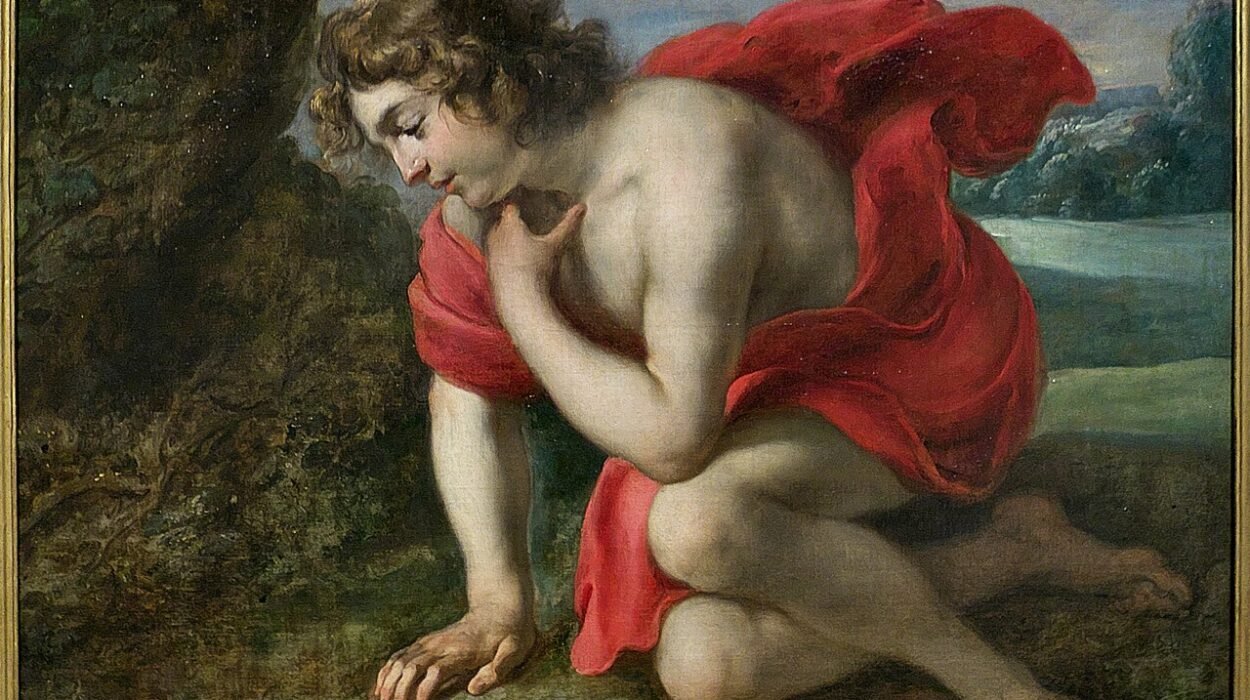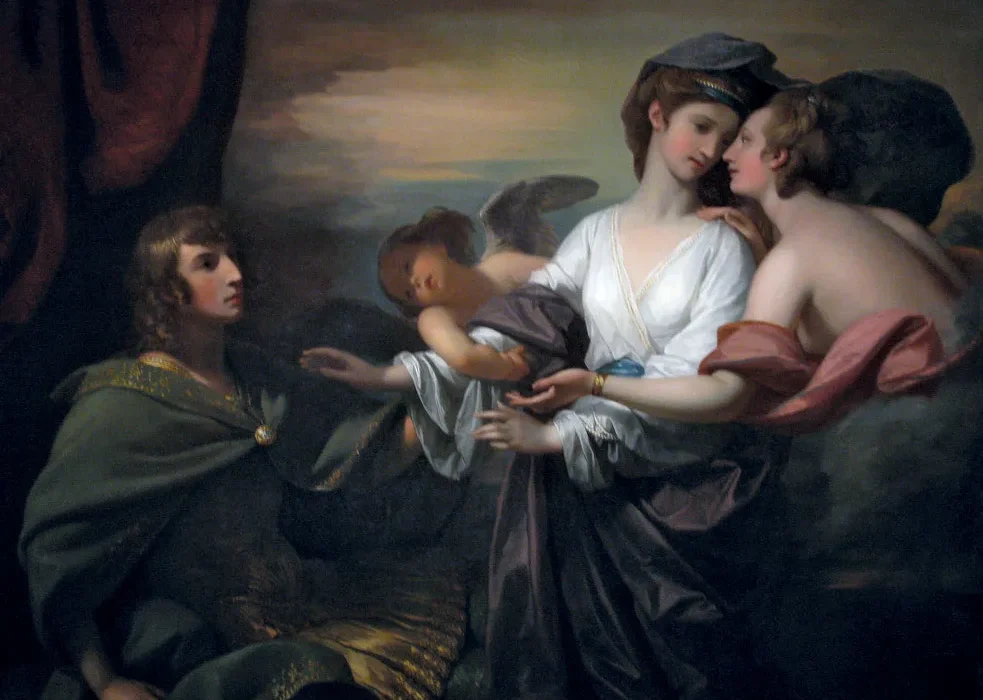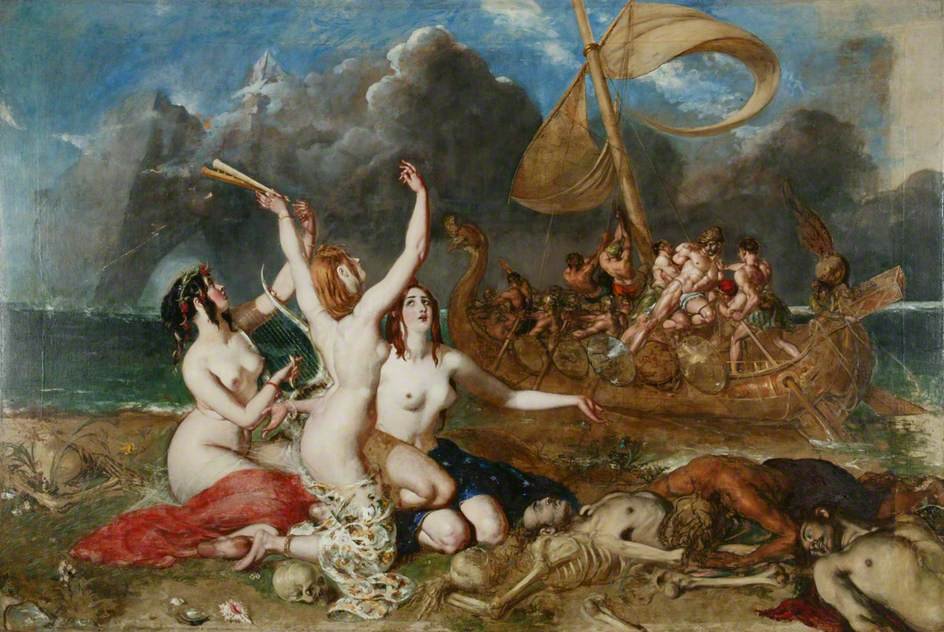In the shadowed corners of Greek mythology, where justice and vengeance intertwine like vines around a tombstone, dwell the fearsome beings known as the Furies. To the Greeks, they were called the Erinyes—spirits of retribution whose presence could chill even the bravest heart. They were neither gods of mercy nor demons of destruction, but something far more haunting: avengers who ensured that crimes did not go unanswered, especially when blood was spilled within a family.
The Furies were not whispered of lightly. To speak their true name was to invite their gaze, and so they were often addressed with euphemisms, like the Eumenides, “the Kindly Ones,” in the hope of softening their wrath. They were a constant reminder that in a world of gods, kings, and mortals, there were forces that could not be bribed, fooled, or escaped. To the ancient Greeks, the Furies were terrifyingly just.
Origins Born of Blood
The story of the Furies begins with one of the most violent episodes in Greek cosmogony. According to Hesiod’s Theogony, when the sky-god Uranus was overthrown by his son Cronus, the world was stained with blood. Cronus castrated Uranus, and from the drops that fell upon the earth (Gaia) sprang the Erinyes, along with the Giants and the Meliae (ash-tree nymphs). Thus, from the very beginning, the Furies were children of bloodshed and revenge, born not from tenderness or creation but from mutilation and primal violence.
This origin shaped their purpose. They were bound to the cycle of vengeance, tied to the idea that spilled blood demanded redress. Unlike the Olympian gods who ruled over the skies, seas, and mortal affairs, the Furies belonged to a darker realm of justice, one that predated Zeus himself. They were ancient, older than the Olympians, older even than the Titans. In their essence, they represented an older cosmic order: the principle that no crime, especially familial crime, could remain unpunished.
The Appearance of Terror
The Furies were not gentle maidens of myth but grotesque figures designed to inspire fear. In art and literature, they are often described with horrifying features: serpents coiling in their hair, eyes dripping with blood, wings like bats or birds of prey, and whips or torches in their hands. Their very presence was said to bring madness and despair to their victims.
Aeschylus, in his play The Eumenides, depicts them as terrifying hounds of justice, relentless in their pursuit, their mouths foaming with rage, their breath suffocating the air around them. They were not subtle; they were overwhelming. And yet, they were not evil in the way later cultures might describe demons. They were forces of balance, hideous in appearance but righteous in mission.
To see the Furies was to know that guilt had already sealed one’s fate.
Sisters of Vengeance
Traditionally, the Furies are often said to be three in number, though earlier accounts sometimes left their number vague. The canonical trio, however, became central in Greek thought:
- Alecto, whose name means “unceasing anger,” was the embodiment of endless wrath and the eternal cycle of retribution.
- Megaera, “the grudging” or “the jealous one,” represented envy, grudges, and the bitterness of those wronged.
- Tisiphone, “the avenger of murder,” specialized in punishing those guilty of homicide, especially familial bloodshed.
These sisters were not gods of war or battle but of moral crime. They did not strike those who killed in open conflict but rather those who murdered kin, broke oaths, or violated sacred trust. For them, the battlefield was not of armies but of consciences.
Guardians of Sacred Law
To understand the role of the Furies is to understand a unique aspect of Greek thought: the sacredness of family bonds. In the ancient world, to kill a stranger in battle might be acceptable, even honorable. But to kill a parent, sibling, or child was an unspeakable violation, one that ruptured the natural order.
The Furies existed to punish such crimes. They hunted matricides, patricides, fratricides—anyone who shed the blood of kin. They pursued oath-breakers, perjurers, and those who desecrated sacred duties to gods or family. Their punishment was not swift death but something worse: unending torment. Victims of the Furies were plagued by guilt-driven madness, haunted visions, insomnia, and despair until their lives collapsed in ruin.
In this way, the Furies were enforcers of a justice deeper than human law. While kings judged crimes in courts, and Zeus upheld divine order from Olympus, the Furies haunted the spaces in between—those crimes too sacred and too profane for ordinary justice.
The Orestes Myth: When Justice Clashes
Perhaps the most famous tale involving the Furies is that of Orestes, as told in Aeschylus’ Oresteia trilogy.
Orestes was the son of Agamemnon, the king who led the Greeks in the Trojan War. Upon Agamemnon’s return, he was murdered by his wife, Clytemnestra, in revenge for his sacrifice of their daughter, Iphigenia. Orestes, driven by duty and by the god Apollo, avenged his father’s death by killing his mother, Clytemnestra.
But in shedding his mother’s blood, Orestes committed the very crime that the Furies existed to punish: matricide. They pursued him relentlessly, tormenting him with madness and driving him to the brink of despair. Apollo defended him, arguing that his act was just. Finally, the case was brought before the goddess Athena, who established a trial by jury in Athens.
When the votes were tied, Athena cast her deciding vote in favor of Orestes, declaring that justice must evolve from vengeance to law. The Furies, at first enraged, eventually accepted their new role as protectors of the city, becoming the Eumenides—the “Kindly Ones.”
This story is not just myth but philosophy. It represents the shift in Greek culture from primitive blood vengeance to the institution of civic justice, from endless cycles of retribution to the possibility of mercy and law.
The Furies in Literature and Drama
The Furies haunted not just myths but the great works of Greek tragedy. In Aeschylus, they appear as relentless, almost inhuman embodiments of vengeance. In Euripides and Sophocles, they often loom in the background, their presence implied whenever blood crimes stain the stage.
Roman writers also inherited the Furies, calling them the Dirae—the “terrible ones.” In Virgil’s Aeneid, the Fury Allecto plays a key role in stirring up rage and war, showing how their influence could shape the fate of nations, not just individuals.
In later literature, from Dante’s Inferno to modern novels, the Furies endure as symbols of guilt, vengeance, and the inescapable grip of conscience. They became archetypes of psychological torment, reminders that justice, whether divine or internal, cannot be silenced forever.
Between Fear and Reverence
Though terrifying, the Furies were not hated by the Greeks. They were respected, feared, and even honored with shrines and rituals. In Athens, there was a sanctuary dedicated to the Eumenides, where offerings were made to appease them. To honor the Furies was to acknowledge the sacred balance of justice, to admit that vengeance, while frightening, was necessary to maintain order.
They stood as reminders that morality could not be mocked, that blood could not be washed away with excuses. Their very existence affirmed that even kings and heroes were not above sacred law.
Symbols of Conscience
In many ways, the Furies can be seen as externalizations of guilt and conscience. The Greeks envisioned them as hounds chasing the guilty, but what they described is not unlike the torment of a guilty mind. To be pursued by the Furies was to be unable to escape one’s own actions, to be devoured from within by the knowledge of crime.
In this sense, the Furies live on in modern thought. When we speak of guilt that will not leave us, of nightmares that punish us, of justice that feels inevitable, we are still speaking in the language of the Furies. They remind us that wrongdoing carries weight, that justice is not merely external but internal, woven into the fabric of the human soul.
The Dual Faces of the Furies
What makes the Furies so fascinating is their duality. They are terrifying and grotesque, yet also protectors of balance. They punish without mercy, yet they were capable of transformation into the Eumenides, protectors of Athens. They are reminders of an older, darker justice, yet they also helped guide the birth of a new one.
This dual nature made them uniquely powerful in mythology. They were not demons to be destroyed nor gods to be adored, but guardians to be feared and respected. They occupied the liminal space between vengeance and justice, terror and reverence, past and future.
The Enduring Legacy of the Furies
Even after the fall of ancient Greece, the Furies refused to vanish. Their image persisted through Rome, through medieval literature, and into modern psychology. Today, they appear in novels, films, and even popular culture, often symbolizing vengeance, rage, or inner torment.
But their true legacy lies deeper. The Furies represent a fundamental truth about human existence: that justice is inescapable, that guilt cannot be ignored, and that wrongdoing carries consequences. Whether imagined as snake-haired goddesses or as the whisper of conscience in the night, they embody the eternal dance between crime and punishment, sin and redemption.
They remind us that vengeance is not merely a human invention but a force woven into the very fabric of human society and psyche. And they whisper that even when law and order evolve, the shadow of the Furies lingers, reminding us of where justice was born.
Conclusion: The Shadow of Justice
The Furies are more than figures from ancient myth; they are archetypes of something profoundly human. Born from blood, relentless in pursuit, terrifying in form, they embody the inevitability of justice and the weight of guilt. They are older than Olympus, older than kings, older than laws.
In the story of Orestes, they showed that justice could evolve—that vengeance could give way to law, and fear to order. Yet even in their transformation into the Eumenides, they never lost their essence. They are the shadows that linger behind every act of wrongdoing, the voice that whispers in dreams, the terror that follows guilt.
To the Greeks, they were the embodiment of cosmic justice. To us, they are reminders that life without accountability collapses into chaos. The Furies live on, not just in myth but in every conscience, in every society that struggles to balance vengeance and mercy, punishment and forgiveness.
And so, when we speak of justice that cannot be denied, when we feel the inescapable grip of guilt, we are still invoking them—the Furies, the Goddesses of Vengeance, eternal guardians of the balance between crime and its reckoning.






